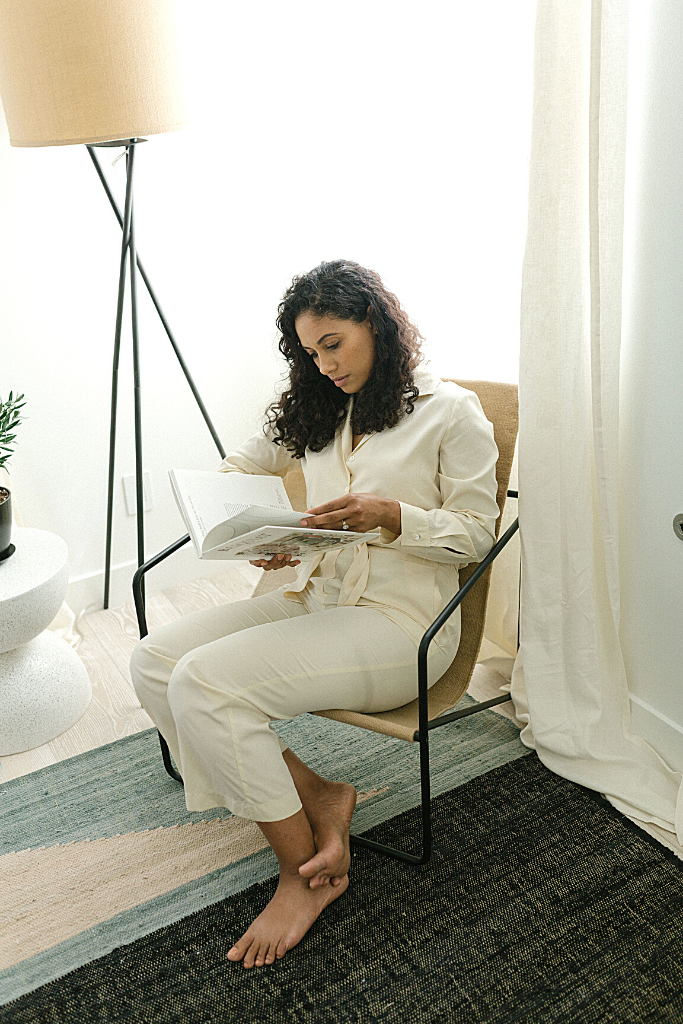Before I dive into a piece about having a healthy relationship with your mother-in-law, let me start by saying how grateful I am to have an excellent relationship with my own MIL–though getting to this place didn’t happen overnight. She’s always been sweet and caring in our relationship, but it’s not always easy terrain to navigate. By talking through certain issues that needed working out with my therapist, I learned to communicate with her in a far more effective way. It was with these tips and an open mind that we carved out a path to respecting and understanding one another. And she is now one of my closest confidants! So today, in conjunction with my story and tips from Elizza LeJeune, LMSW Licensed Clinical Social Worker, I’m sharing ideas around understanding someone else’s map of the world and communicating your boundaries.
“To begin, I always think of healthy boundaries as a secure home,” says Elizza. “A home in which there are locks on the doors that open and close, a peephole to see who’s visiting, or a ring doorbell to check if it’s a stranger. The key to these things is being able to make a decision on when you want to let someone in. Boundaries are a way for you to check-in with how you’re feeling and remain safe. They allow you to set the distance between yourself and others. Think of them as setting the tone for what you will allow in your relationship with someone.”
Navigating my past with my own mother
My mother was in and out of the picture for a few years of my life, so I grew up with a very hands-off approach and view to mothering. I was emancipated at age 17 (with my mother’s consent) to get my first apartment, and that was the extent to which my mom was involved in my living situations from that point on. When we reconnected, I had already become a young adult, which led to our relationship becoming more of a friend or support person in my life than a conventional mother-daughter role. Fast forward 13 years later, to when I met my husband. He was living in an apartment fully decorated by his mother. I quickly realized that the role my MIL had played in my husband’s life was very different from the role my mother had played in mine.
As my relationship grew with my husband, I noticed I was now involved in areas of his life previously handled by his mother. Being young and slightly self-absorbed, I didn’t think twice about asserting my perspective on his clothing, home decor, or any other life decision I felt suited to take over as the new woman in his life. I mean, we love each other and are intending to build a life together, so why wouldn’t I? Never once did I think about how his mother might be feeling about all the changes I was creating. Up until me, his mother had been the primary woman in his life. I was slowly but surely stepping on my MIL toes without even knowing it.
“When you love someone, you often are thinking about how your actions and choices will affect them. Setting boundaries with a loved one should be handled with care.” says Elizza LeJeune. “Of course, you wouldn’t allow your 3-year-old to run out into the streets because of the dangers that arise. This is a boundary that keeps them safe and you emotionally from pain.”
Of course, time went on and we decided to get married, we chose to elope to Italy for our wedding. My family was ecstatic, as we are very non-traditional, so telling them we weren’t having a big traditional wedding wasn’t a big deal. Telling my MIL, on the other hand, was a much harder thing to do. My husband and I knew we might get some push back, but were not expecting the much bigger reaction we got. Needless to say, my mother-in-law was very upset. My initial response was defensiveness and anger. Why was she imparting such big feelings about our day? Didn’t she want us to be happy? After venting to my therapist, I found some life lessons in understanding someone else’s map of the world and replaced my defensiveness with curiosity and empathy.
After talking through my feelings with my husband and therapist, I realized that just like I had dreamed of my wedding day, my MIL had dreamed of her son’s wedding day. And in her dream, she was there, she had a mother-son dance and took photos with her son. Her map of her son’s wedding looked very different from the reality we were presenting and what she had dreamed of her entire life. I knew firsthand how gut-wrenching it could be when you are faced with the shock of your dream not lining up exactly how you had imagined it.
With a few tips from my therapist, I learned that I could navigate and communicate with my mother-in-law in a far more effective way. Allowing myself to make sure she was being heard, empathizing with her feelings, and sharing my boundaries and wants was all it took to understand where she was coming from. I’ve found that realizing someone else’s map of the world and communicating your boundaries is the best way to build healthy relationships!
Here are some of Elizza LeJeune’s simple tools to use when setting boundaries:
- What is the behavior I find hurtful or intolerable?
- Do a temperature check. How am I feeling emotionally when this behavior is done? Are you having feelings of resentment that could affect your delivery?
- Practice makes perfect. Write out clearly what your request or needs are and then ask a friend to practice communicating it to them. A good friend will get really into role-playing and push back. That will break the ice and make saying no or standing up for yourself less daunting when it comes time to do it!
- Release the outcome. Oftentimes we fear what emotion setting boundaries will bring for the other person. This is called fortune-telling and not in a good uplifting way. Take a deep breath and remember you are not responsible for anyone else’s happiness above your own. Saying no or setting a boundary doesn’t make you a bad daughter-in-law!








